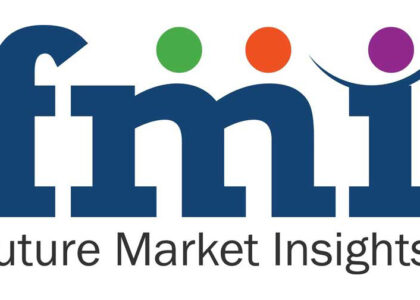
The global non-halogenated flame retardants market is poised for robust growth, with demand expected to register a compound annual growth rate (CAGR) of 6.2% and reach a market value of USD 6,911.1 million by 2032. This growth is driven by increasing concerns over the environmental and health impacts of traditional halogenated flame retardants, prompting a shift towards non-toxic and eco-friendly alternatives. The rise in stringent fire safety regulations across industries, coupled with heightened awareness of sustainability, is fueling the adoption of non-halogenated flame retardants in various applications such as construction materials, automotive components, electronics, and textiles. This trend reflects a broader industry transition towards greener and safer flame retardant solutions, further supported by advancements in material science and technology.
Growth in the construction industry and surging urbanization are expected to bolster growth in the global non-halogenated flame retardants market. In addition to that, the surging use of plastics in the automotive & transportation, electrical equipment, and consumer electronics industries is expected to drive the non-halogenated flame retardants market.
Key Takeaways
- On the global level, the electrical and electronics business is expected to bolster due to the rising demand for end users. On the basis of the electrical and electronics sector, plastics are widely applied to printed circuit boards, electronic housing & components, wire & cable, switches, and connections.
- These days, flame retardants are considered to be essential components in their manufacturing, that protect such items from fire caused by resistive heating or joule heating. Electronic garbage and other hazardous products associated with it have extracted more attention during the last decade.
- Surging investments in the electronics sector, particularly in India and East Asian regions are anticipated to augment growth in the non-halogenated flame retardants market. The electronics industry is immensely gaining traction all over the world since several companies in the field of flame retardants are targeting this sector owing to significant opportunities.
- Government rules rotating around vehicle emission management, combined with favorable features of modern plastics are expected to drive original equipment manufacturers (OEMs) to utilize plastic materials in the production of automotive parts.
- In the past few years, utilization of plastic components in the automotive industry has surged attributing to the use of plastic components in the automobile industry increased due to the material’s various features such as high durability, corrosion resistance, toughness, design flexibility, and resilience.
- Widespread awareness about reducing carbon dioxide emissions is expected to surge fuel economy. It has been anticipated that an average car employing plastic composites accounts for around 10% to 15% of the car’s overall weight. Since plastics are considered lighter than their metal equivalents, they tend to increase fuel efficiency impeccably.
- As per FMI projections, a 10% decrease in vehicle weight saves 5-7% on gasoline. Therefore, there is a possibility to cut carbon dioxide emissions by 20 kg for every kilogram of vehicle weight reduction.
Competitive Landscape
Prominent players in the non-halogenated flame retardants market are concentrating on the widespread expansion of their production capacities owing to significantly rising demand for the product in medical applications and tire production. In addition to that, to improve their global presence, dominant market players are investing in acquisitions and collaboration activities to expand their market presence and consumer base, as well as strengthen their distribution networks.
Key Companies Profiled
Clariant International Limited; Albemarle Corporation; Israel Chemical Limited; Italmatch Chemicals S.p.A; Chemtura Corporation; Nabaltec AG; FRX polymer Inc.; Huber Engineered Materials; Amfine Chemical Corporation; THOR Group Limited; BASF SE.; Huber Engineered Materials; Lanxess AG; DSM; Delamin; Dupont; Sarex; Firefree Coatings, Inc.; Akzo Nobel N.V.; Dow; Lubrizol Corporation; SUZUHIRO CHEMICAL CO., LTD.; ADEKA CORPORATION; H.M. Royal; MPI Chemie; Oceanchem Group Limited; Tosaf
Get in Touch with Our Sales Team to Secure Your Copy of the Report Now!
Non-Halogenated Flame Retardants Market Outlook By Category
By Product Type:
- Metal Oxide Based
- Phosphorous Based
- Nitrogen Based
- Others
By End-Use Industry:
- Electrical and Electronics
- Construction
- Automotive & Transportation
- Others
By Application:
- PO
- Epoxy
- UPE
- Rubber
- PVC
- PU
- Styrenics
- ETP
- Others
By Region:
- North America
- Latin America
- Europe
- East Asia
- South Asia & Pacific
- Middle East & Africa
About Future Market Insights (FMI)
Future Market Insights, Inc. (ESOMAR certified, recipient of the Stevie Award, and a member of the Greater New York Chamber of Commerce) offers profound insights into the driving factors that are boosting demand in the market. FMI stands as the leading global provider of market intelligence, advisory services, consulting, and events for the Packaging, Food and Beverage, Consumer Technology, Healthcare, Industrial, and Chemicals markets. With a vast team of over 400 analysts worldwide, FMI provides global, regional, and local expertise on diverse domains and industry trends across more than 110 countries. Join us as we commemorate 10 years of delivering trusted market insights. Reflecting on a decade of achievements, we continue to lead with integrity, innovation, and expertise.
Contact Us:
Future Market Insights Inc.
Christiana Corporate, 200 Continental Drive,
Suite 401, Newark, Delaware – 19713, USA
T: +1-845-579-5705
For Sales Enquiries: sales@futuremarketinsights.com
Website: https://www.futuremarketinsights.com
LinkedIn| Twitter| Blogs | YouTube

